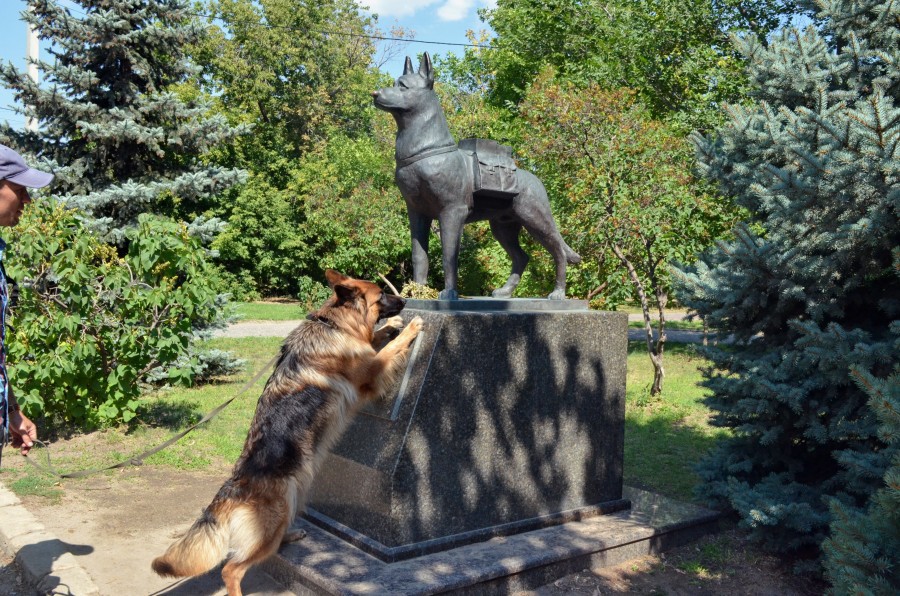The tragic fate of war dogs doomed to the ultimate sacrifice.
During World War II, dogs were trained to perform one of the most terrifying missions imaginable: to become living weapons against enemy tanks. Known as anti-tank dogs — собаки-истребители танков or противотанковые собаки in Russian, Panzerabwehrhunde or Hundeminen ( mine dogs ) in German — these animals were used to carry explosives to military targets. Between 1930 and 1946, the Soviet Red Army established an intensive training program, with operational use concentrated between 1941 and 1943 on the Eastern Front. Initially trained to deposit a timed bomb and return, these dogs eventually became sacrificial weapons, as the charge was triggered upon impact.
The idea of using dogs for military purposes was approved as early as 1924 by the Revolutionary Military Council of the USSR. The dogs were employed in various missions: rescue, message or medicine delivery, mine detection, food or casualty transport, and combat support. From the 1930s onward, the concept of “living mines” was developed, with specially designed explosives. The first specialized school opened in the Moscow oblast, soon followed by twelve regional schools, three of which were entirely dedicated to anti-tank dogs. The German Shepherd was the preferred breed due to its physical abilities and ease of training, though other breeds were also used.
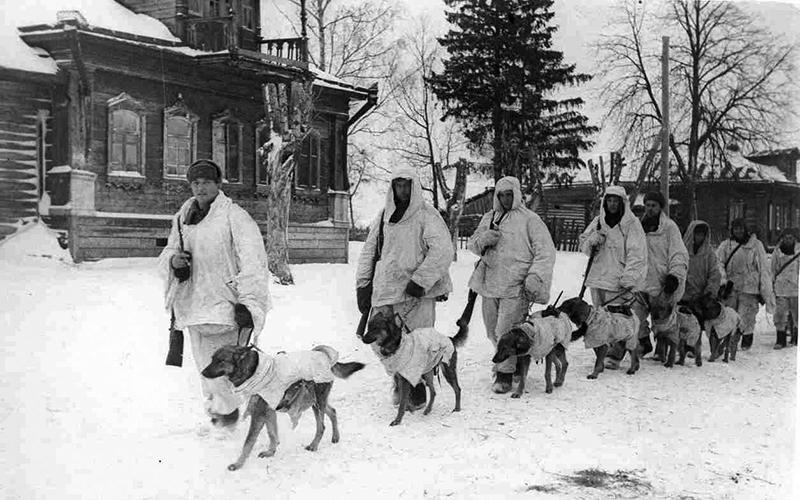
Anti-tank dog unit
At first, the dogs were supposed to carry a bomb attached to their back, reach a stationary target, pull a strap with their teeth to release the charge, then return. The explosion was triggered by a timer or remote control, but these methods failed: the dogs panicked and sometimes came back with the bomb, endangering their handlers.
The program was therefore modified: the explosives were now triggered upon impact. The dogs were trained to seek out any enemy tank. Starved, they were conditioned to find their food beneath vehicles. At first, the tanks were stationary, then engine noise and blank gunfire were added to simulate the battlefield.
Each dog carried two pouches containing a 10–12 kg mine. A wooden lever extended from the harness; when it touched the underside of a tank, the explosion was triggered, aiming at the vulnerable area of the chassis.
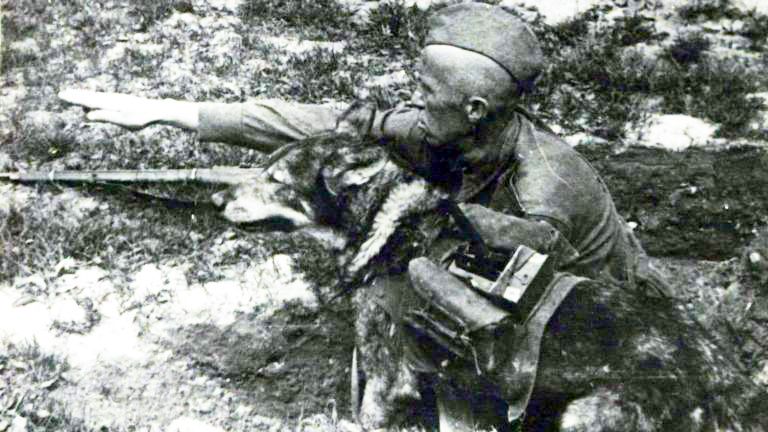
Anti-tank dog and its explosive device on the back
The first group of anti-tank dogs was sent to the front in the summer of 1941: 30 dogs, 40 handlers. The results were mixed. The dogs, accustomed to stationary tanks, were confused by moving vehicles. Some waited for them to stop but were shot before reaching them. Others, terrified by the gunfire, ran back toward Soviet lines… causing deadly explosions. Handlers were therefore ordered to shoot any dog that returned.
Of the 30 dogs in the first deployment, only four managed to hit German tanks. Six exploded in Soviet lines, causing deaths and injuries. Three were killed by the Germans, who were then able to study their equipment. A German officer later described these dogs as “a desperate and ineffective measure.” Nazi propaganda seized upon the story to ridicule the Red Army, accusing it of replacing men with dogs.
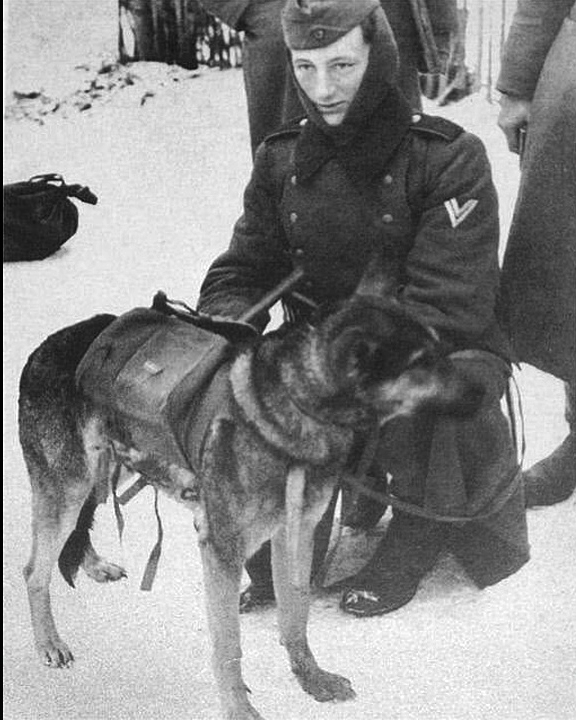
German propaganda photo captioned:
“A dangerous defector: a dog with a mine. A particularly malicious invention of the Soviets: the ‘mine dogs.’ Several kilograms of explosives, connected to an upright contact lever, were fixed to the animals’ backs before they were sent toward German lines. Were they trained to aim at tanks—perhaps as a last resort to stop the advancing waves of German steel? In any case, we do not fear the 2 or 3 kilograms of explosives with a contact lever strapped to these animals’ backs.”
Image from the Eastern Front, February 15, 1942. The attack against the Soviets...
Another major problem arose: the dogs had been trained with Soviet tanks running on diesel. German tanks used gasoline, and the dogs’ keen sense of smell drove them toward the Soviet vehicles instead.
The effectiveness of the program remains widely debated. Soviet sources claimed 300 German tanks destroyed, but this number is considered exaggerated by many historians. Some isolated successes, however, are documented: six dogs reportedly damaged five tanks near Hlukhiv; 13 tanks destroyed near the Stalingrad airfield; 16 dogs disabled 12 armored vehicles during the Battle of Kursk, at Tamarovka and Bykovo.
The Germans quickly adopted countermeasures: all soldiers were ordered to shoot dogs on sight, as tank cannons were ineffective against such small and mobile targets.
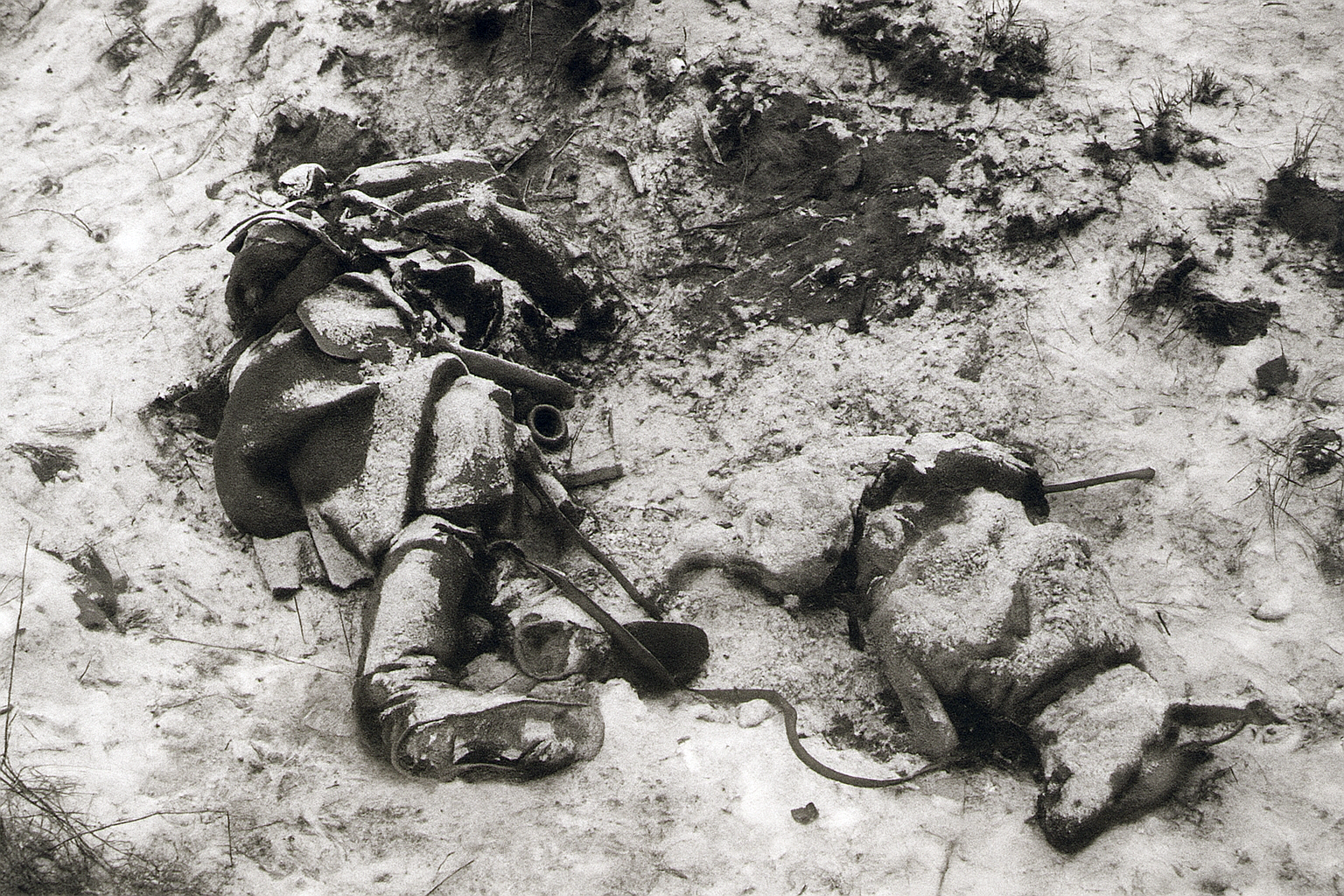 Anti-tank dog and its handler, killed in combat.
Anti-tank dog and its handler, killed in combat.
In his book Hitler Moves East, former SS officer Paul Karl Schmidt recounts an episode near Karachev:
“Two days after a successful advance, the 18th Panzer Division under General Nehring saw its progress suddenly halted. The tanks had just silenced the Soviet positions. The 9th Company reached the northern outskirts, crossing a cornfield.
The order was given: ‘All to me. Align on the right. Halt. Cut the engines.’
Suddenly, two German Shepherds burst from the field. They wore harnesses. The radio operator asked:
— What are they carrying?
— Messages… or maybe they’re medical dogs, suggested the gunner.
One of the dogs crawled under the lead tank. The explosion sent up a burst of flames. Sergeant Vogel understood:
— The dog! The dog!
The gunner aimed at the second dog. He fired twice but missed. A burst from a machine gun brought the animal down. When they approached, it was still breathing. A pistol shot ended its suffering.”
By 1942, the program had declined in importance, overtaken by the emergence of new, more effective anti-tank weapons. The schools shifted their focus to mine detection and transport.
On May 28, 2011, a monument was unveiled in Volgograd to honor these sacrificed dogs. Designed by architect Nikolai Karpov, the sculpture stands on a granite base. The dog depicted resembles an East European Shepherd but does not represent a specific breed, symbolizing all the dogs involved. The plaque reads: “Dedicated to the destroyers of fascist tanks. Battle of Stalingrad 1942–1943.”
